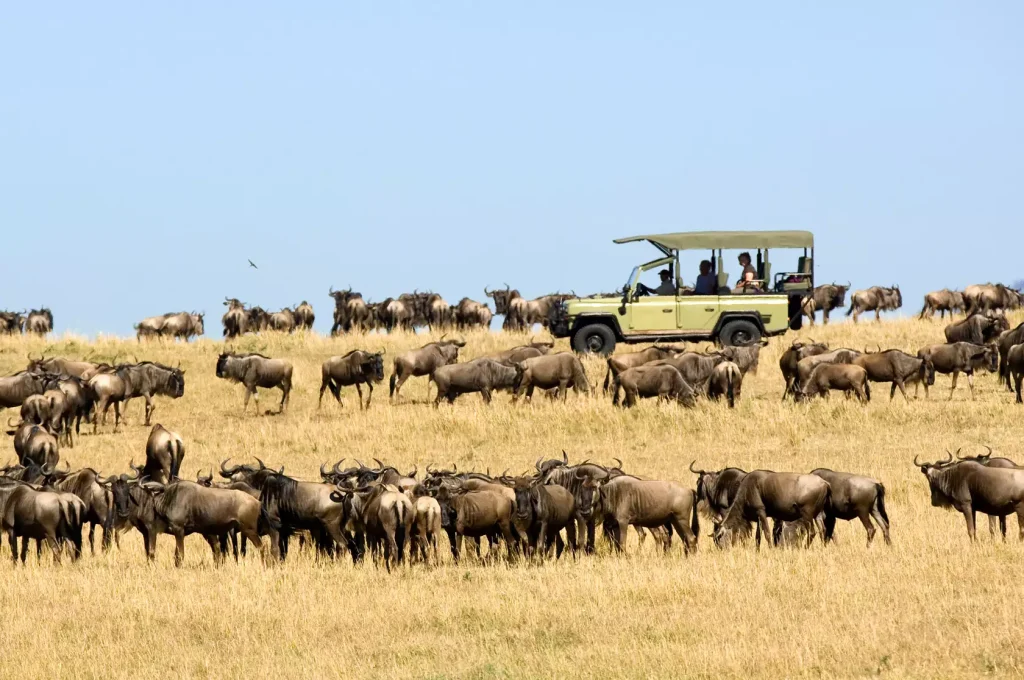What Wildlife Can I See in Serengeti National Park?
What Wildlife Can I See in Serengeti National Park, Stretching 14,750 square kilometers across northern Tanzania, Serengeti National Park forms the jewel in the East African ecological crown. Serengeti National Park is the beating heart of one of the most celebrated ecosystems in Africa. Designated a UNESCO World Heritage Site, the Serengeti hosts one of the most dazzling concentrations of wildlife anywhere on Earth. The park lies in northern Tanzania, about 335 km (about a 7-hour drive) from Arusha, near the border with Kenya’s Maasai Mara, forming the Mara-Serengeti ecosystem. Serengeti lies within the Mara and Simiyu regions and forms part of the Northern Safari Circuit, making it easily accessible by road or domestic flight.
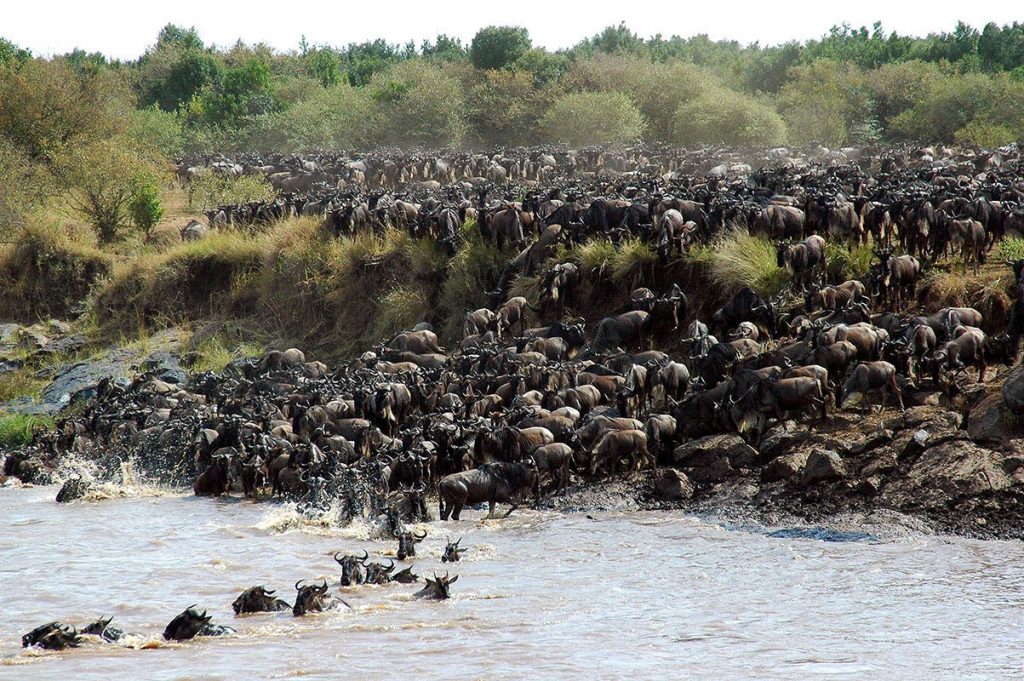
The park’s name, “Serengeti,” is derived from the Maasai word “Siringet,” which means “endless plains,” and like its name, Serengeti is a landscape of boundless wonder, raw beauty, and nature in its purest form. Home to over 3 million large mammals and more than 540 bird species, the park boasts one of the best wildlife viewing destinations in Africa. From the thundering Great Migration to the quiet majesty of a leopard in the trees, Serengeti is not just a destination, but an awakening of wildlife.
Whether you are exploring in the comfort of your 4×4 safari vehicle, soaring through the skies in a hot air balloon over the endless plains, or straddling rugged trails on foot alongside expert guides tracking elusive predators, the Serengeti unleashes the ultimate wildlife viewing adventure.
Wildlife in Serengeti National Park
-
The Big Five (Lion, Leopard, African Buffalo, African Elephant, Black Rhino)
Lion (Panthera leo)
With 3,000 – 4,000 lions, Serengeti National Park likely holds the largest lion stronghold left on Earth. Lions in the Serengeti are not just apex predators; they shape herbivore populations and territories. Prides can be as large as 30 individuals, and during the dry season, many lions often concentrate near rivers and waterholes, particularly in the Seronera Valley, Moru Kopjes, and the Ndutu region. Tourists on day or night game drives can expect to spot them lounging lazily by day, and commanding by night. Each moment seeing these predators is exhilarating.
Leopard (Panthera pardus)
Often described as solitary, stealthy, and sensational, leopards are Serengeti’s ghost-cats. Many studies show densities of 5.4 individuals per 100 km² in core areas. They are most likely to be spotted draped across a branch of a sausage tree or silently stalking reedbuck near water in the park’s Seronera region.
African Buffalo (Syncerus caffer)
African buffaloes are some of the most common sightings on African wildlife viewing safaris, and over 28,500 buffalo roam the plains and riverine zones of Serengeti National Park. The large mammals are frequently spotted in herds of 1,000-plus. Their thick horns and massive frames dominate floodplains and woodland edges of the park.
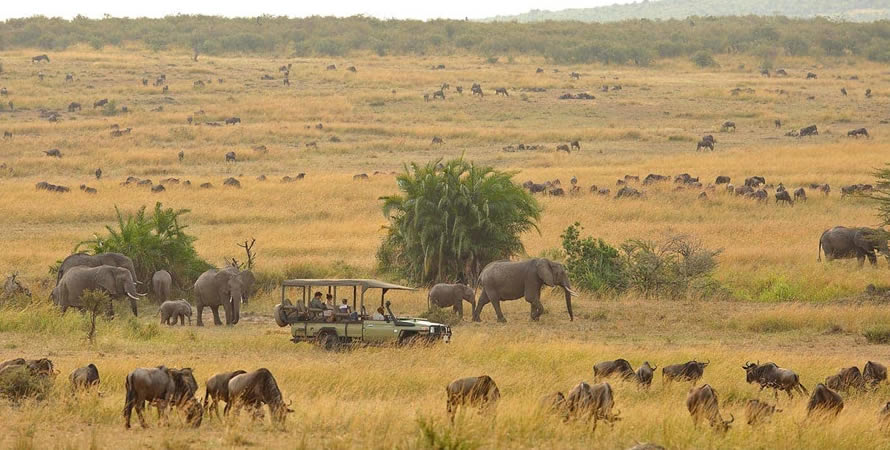
African Elephant (Loxodonta Africana)
Recovered from poaching lows, elephant numbers in Serengeti National Park surpassed 5,000 by 2014, with family bonds lasting decades and matriarchal hierarchies maintaining migratory wisdom over dry-season cycles. With over 5,000 – 8,000 individuals, they are particularly visible in the northern Serengeti and Western Corridor. Nonetheless, these magnificent creatures shape the very ecosystem: tearing trees, digging waterholes, and spreading seeds. You can smell them before you even see them: musk, dust, and the quiet thunder of massive footsteps.
Black Rhino (Diceros bicornis)
Black rhinos are one of Africa’s critically endangered species, with fewer than 70 individuals in the Serengeti ecosystem. Rhino sightings in Serengeti National Park are rare milestones accomplished only by persistence and specialized safari guides tracking them mostly in the southern central sectors and the Ngorongoro buffer zone. Conservationists track and protect each one like a treasure, and so is spotting one, especially on a wildlife viewing safari.
-
The Great Migration
The Great Migration is the epitome of wildlife viewing in Serengeti National Park and across Africa. Every year, over 1.5 million wildebeest, 250,000 zebra, and 500,000 gazelles traverse the endless plains of the Serengeti in a massive loop covering nearly 1,000 km. The journey is an eventful one – a fight for survival, driven by rainfall, pursued by predators, and challenged by rivers thick with crocodiles. The best time to witness the great migration in the Serengeti is always dependent on the season of the cycle and the location of the herds.
December to March – Calving Season (Southern Serengeti & Ndutu)
This is where the circle begins. The herds arrive on the short-grass plains of Ndutu and Southern Serengeti, where fresh rains bring rich grazing. By February, calving peaks, up to 8,000 wildebeest calves are born each day. With this explosion of new life comes danger: lions, cheetahs, and hyenas descend for easy prey, and this is the best time to witness intense predator action and dramatic survival scenes, especially in Ndutu.
April to June – Westward Movement (through Seronera to Grumeti)
As the plains dry, the herds push west toward the Grumeti River, where they have to cross amidst the Grumeti crocodiles, some of the largest in Africa. This period sees fewer tourists, making it a prime time for less-crowded game viewing with plenty of predator encounters and strategic river drama.
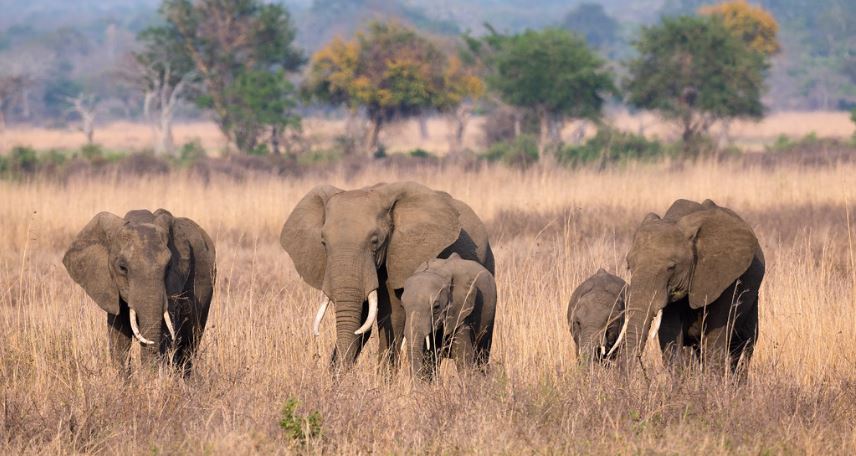
July to October – Mara River Crossings (Northern Serengeti & Kogatende)
This is the climax of the Great Migration. By this time, the herds reach the Mara River, a deep, fast-flowing obstacle laced with yet another population of crocodiles. Thousands gather at the banks, hesitant, building pressure; meanwhile, the lions and leopards await in the riverine shrubbery. These crossings, mostly around Kogatende, are the migration’s most famous wildlife spectacles, as the herds leap, fall, scramble, and survive. July to September is the best time to see this, with thrilling action almost daily.
November – December: The Return South
With fresh rains falling in the southern Serengeti, the herds begin their slow return, retracing their steps to calving grounds. This is a quieter phase characterized by fewer crowds, but excellent wildlife viewing across central and eastern Serengeti, with landscapes starting to bloom once more.
-
Other Wildlife in Serengeti National Park
Beyond the Big Five and the Great Migration, Serengeti National Park teems with life at every scale, a vast, interconnected web of creatures shaping one of the world’s richest ecosystems.
Cheetahs: The Serengeti is famous for its predator populations, including around 300 to 400 individuals that roam the open plains. Tourists can expect to spot them across the plains of Ndutu, Gol Kopjes, and in the Eastern Serengeti. Unlike other big cats, cheetahs in the Serengeti hunt in daylight using clear sight, reaching speeds up to 96 km/h in just 3 seconds.
Masai giraffes: The Serengeti boasts over 3,500 individuals, browsing the acacia woodlands and roaming near granite kopjes. Their unique coat patterns and towering grace make them unmissable icons of the savannah, especially on game drives.
Spotted hyenas: Often maligned, spotted hyenas are fiercely intelligent and social. These can be spotted in greater numbers than lions, especially on the park’s open plains. The matriarchal predators play a vital role in both hunting and scavenging.
African wild dogs: African wild dogs are the rarest predators to spot in the Serengeti; however, they are a coveted sighting. Best seen in the Northern Serengeti or during quieter months, these endangered pack hunters are known for their coordination and success rate.
Antelope Species: The grassy plains of the Serengeti also support abundant antelopes and grazers such as topi, eland, hartebeest, impala, waterbuck, and warthogs. These species form the foundation of the food chain, sustaining lions, leopards, and crocodiles alike.
Other wildlife to look out for in Serengeti include servals, mongoose, porcupines, dik-diks, and bat-eared foxes, adding depth to the game viewing experience.
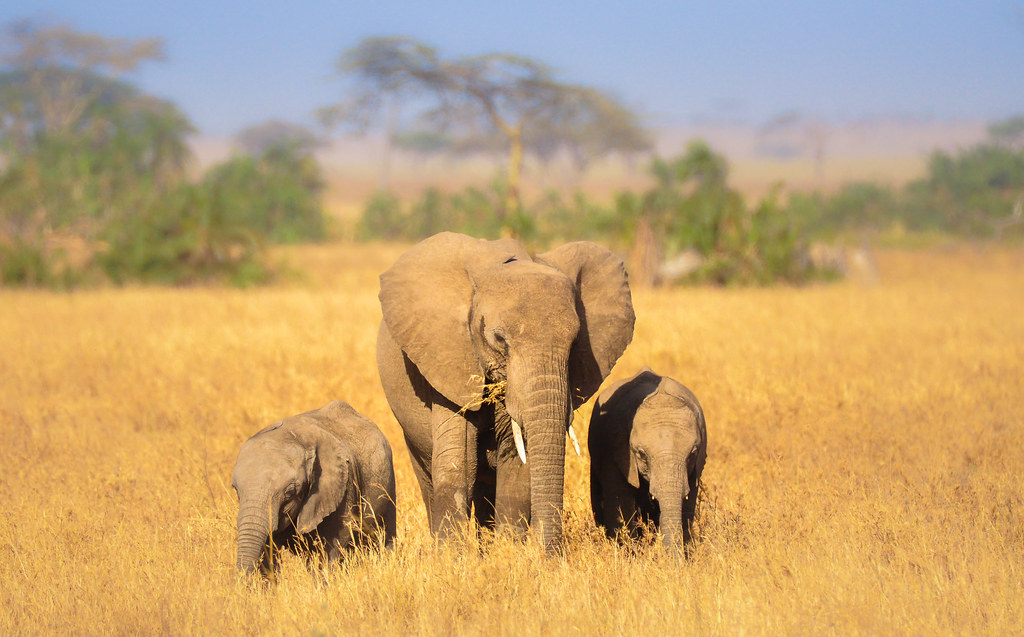
-
Birdlife in Serengeti National Park
The Serengeti is not only about roaring lions and stampeding herds; it is also a paradise for bird lovers, home to over 540 species. From the shimmering sunbirds in acacia canopies to the heavy flight of the kori bustard, Serengeti National Park offers extraordinary diversity. Birding enthusiasts can expect to spot rare “Serengeti Specials” like Schalow’s turaco, rufous-tailed weaver, grey-crested helmet-shrike, and Fischer’s lovebird, to name a few.
Thanks to its varied habitats, crowned by plains, riverine forests, swamps, and woodlands, the park also hosts flamingos, cranes, hornbills, eagles, ostriches, secretary birds, and the ever-striking lilac-breasted roller.
When is the Best Time for Birdwatching in Serengeti National Park?
The best time for birdwatching in Serengeti National Park is between November and April, when waves of migratory birds arrive from Europe and North Africa. During this vibrant season, many species flaunt their brightest breeding plumage, turning the landscape into a living gallery of color and song. For birders chasing endemics or seasonal migrants, this is the best time to visit Serengeti National Park.
Wildlife Viewing in Serengeti National Park
Wildlife viewing in Serengeti National Park is an immersive experience by design. The park offers safari guided game drives in 4×4 safari vehicles at dawn and dusk, bringing guests close to predator hunts, grazing herds, and dramatic scenery. Walking safaris led by expert guides and rangers, particularly in the Grumeti and Seronera regions, reveal the park’s quieter wonders, tracks, flora, and hidden creatures.
On the other hand, the more adventurous can take to the Serengeti skies on a hot-air balloon ride at sunrise for a surreal bird’s-eye view of the park’s breathtaking plains, rivers, and kopjes bathed in golden light.
Each region of Serengeti National Park offers unique wildlife viewing experiences. For instance, the Central Serengeti (Seronera) boasts dense predator populations including lions and leopards, while the Ndutu and the southeast regions explode with life during the January–March calving season of the Great Migration. The Western Corridor offers thrilling Grumeti River crossings from May to July, while the Northern Serengeti delivers the dramatic Mara River crossings from July to October.
When is the Best Time to See Wildlife in Serengeti National Park?
Wildlife in Serengeti National Park is visible year-round, but the dry season from late June to October is peak wildlife viewing season, offering high visibility, clear skies, and dramatic river crossings. July to September, in particular, showcases the dramatic Mara crossings at their most intense.
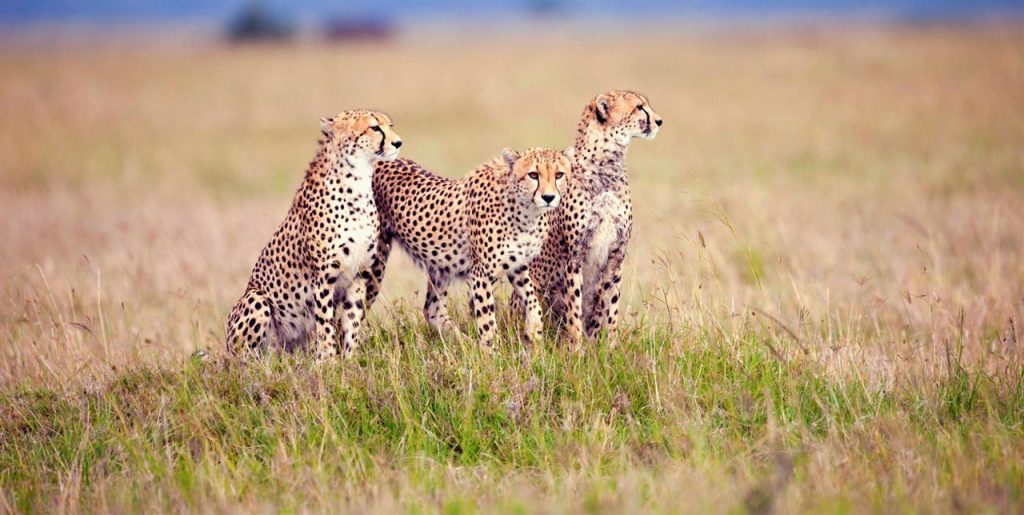
On the other hand, the wet season, from November to April, paints the plains green and brings newborns, predator action, and vibrant birdlife in the park. For those interested in witnessing the calving season in Ndutu, January to March is the ideal time to visit. All in all, the best time for wildlife viewing in Serengeti National Park depends on what wildlife viewing experience you are looking for; it could be to witness the calving season, spot predators in the Seronera region, or to enjoy a front-row seat to the Great Migration River Crossings. Nonetheless, the Serengeti remains a hub for wildlife viewing.
